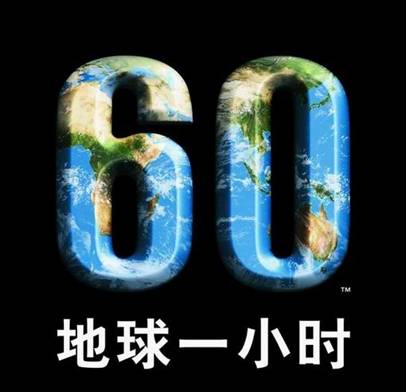Earth Hour is an annual international event sponsored by the WWF (World Wildlife Fund), held on the last Saturday of March, which asks households and businesses to turn off their non-essential lights and electrical appliances for one hour to raise awareness towards the need to take action on climate change.

Based on an idea successfully executed in Thailand in 2005, it was pioneered by WWF Australia and the Sydney Morning Herald in 2007, and achieved worldwide participation in 2008.
In 2009, Earth Hour is being taken to the next level, with the goal of 1 billion people switching off their lights. This target has already been exceeded and numbers are going up.
Earth Hour 2007
Earth Hour was held in Sydney, Australia at 7:30 p.m., local time. About 2.2 million households and businesses participated in the first ever Earth Hour.
Earth Hour 2008
In its global debut, 35 cities on seven continents took part as official flagship cities. Another 400 cities took part and turned out the lights in landmarks.
Non-essential lights went out in the Empire State Building (New York City), Sears Tower (Chicago), Golden Gate Bridge (San Francisco), Bank of America Plaza (Atlanta, Georgia), Sydney Opera House (Australia), Wat Arun Buddhist Temple (Bangkok, Thailand), the Colosseum (Rome), Royal Castle (Stockholm, Sweden), London City Hall, Space Needle (Seattle) and the CN Tower (Toronto, Canada).
The official Website for the event, earthhour.org, received over 6.7 million unique visitors in the week leading up to Earth Hour. Other Websites took part and Google's homepage went "dark" on the hour.
According to a Zogby International online survey, an estimated 50 million people around the world participated in the Earth Hour 2008.
The survey showed a 4-percentage increase in awareness of environmental issues such as climate change, compared with that before the event.
Energy saved in 2008
Toronto saved 900 megawatt-hours, an 8.7 percent saving compared with a typical March Saturday night.
Ireland had a 1.5 percent reduction in energy use for the evening.
Between 6:30 p.m. and 9:30 p.m., there was a reduction of 50 megawatts, saving 150 megawatt-hours, or around 6 tons of carbon dioxide.
In Dubai, United Arab Emirates, several landmarks went dark and some street lighting was dimmed by 50 percent. The power authority reported savings of 100 megawatt-hours, a 2.4 percent reduction in demand compared with usage before lights-out.
The best result was from Christchurch, New Zealand, reporting a drop of 13 percent in demand.
Melbourne, Australia, saved 10.1 percent of electricity.
Sydney, which participated in both 2007 and 2008, cut consumption by 8.4 percent in 2008, lower than 10.2 percent in 2007, the kickoff year.
Earth Hour 2009
More than 2,400 cities from 82 countries will join Saturday's "Earth Hour" to boost the global awareness of climate change, Omar Vidal, director of the World Wildlife Found (WWF) in Mexico, said on March 26, 2009.
"The Earth Hour" is set to turn off lights for one hour in public and private houses and buildings from 8:30 p.m. to 9:30 p.m. local time in each country.
This year's "Earth Hour" will start in New Zealand and finish in the west coast of the United States.
Earth Hour Website: www.earthhour.org
(China.org.cn March 27, 2009)